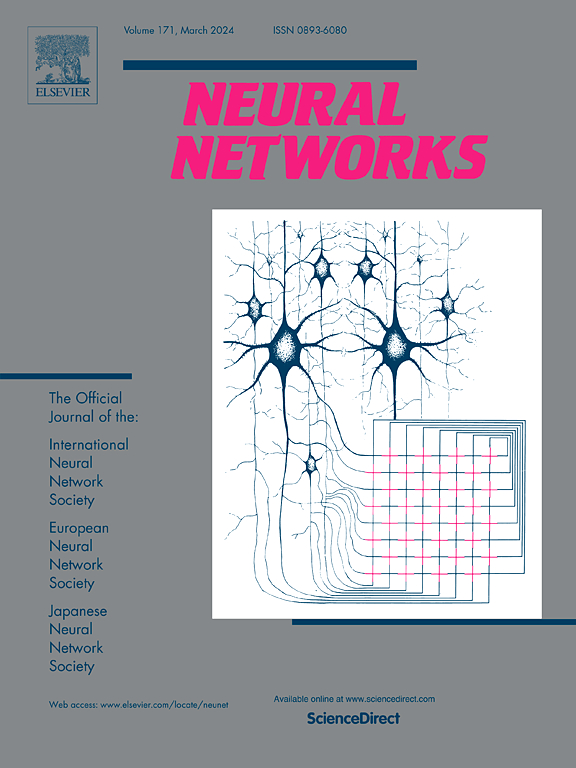DMCA-Net: Dual-branch multi-granularity hierarchical contrast and cross-attention network for cervical abnormal cell detection
IF 6.3
1区 计算机科学
Q1 COMPUTER SCIENCE, ARTIFICIAL INTELLIGENCE
引用次数: 0
Abstract
Accurate detection of abnormal cells is essential for early screening and precise diagnosis of cervical cancer. Despite the recent advances in deep learning-based methods for cervical cancer detection, their broad clinical applications are hindered by several technical challenges. On the one hand, gradually evolved abnormal cells are visually similar to normal cells. On the other hand, single cells and cell clusters exhibit significant appearance variations, overlooking those between normal and abnormal cells. In order to overcome these challenges, we propose a novel dual-branch multi-granularity hierarchical contrast and cross attention network, called DMCA-Net. Specifically, DMCA-Net utilizes dual branches to detect abnormal and normal cells, respectively. Meanwhile, an inter-cell pair-wise cross-attention (IPCA) is utilized to improve feature embedding learning. The IPCA regularizes the attention learning of abnormal cell features by treating normal cell features as distractors. In addition, DMCA-Net also adopts a multi-granularity hierarchical contrastive learning (MHCL) to enhance the classification ability. Our study indicates that MHCL alleviates the interference of intra-class appearance variations in cervical cell, effectively pulls apart the inter-class distance between different classes of cervical cells at different granularities. Extensive experiments on two publicly available datasets demonstrate that our DMCA-Net outperforms existing methods, achieving state-of-the-art (SOTA) results. Code and additional annotation data are available at https://github.com/zhihuaji/DMCA-Net.
DMCA-Net:用于宫颈异常细胞检测的双分支多粒度分层对比和交叉注意网络
异常细胞的准确检测对于宫颈癌的早期筛查和准确诊断至关重要。尽管最近在基于深度学习的宫颈癌检测方法方面取得了进展,但它们的广泛临床应用受到一些技术挑战的阻碍。一方面,逐渐进化的异常细胞在视觉上与正常细胞相似。另一方面,单个细胞和细胞团表现出显著的外观变化,忽略了正常细胞和异常细胞之间的差异。为了克服这些挑战,我们提出了一种新的双分支多粒度分层对比和交叉注意网络,称为DMCA-Net。具体来说,DMCA-Net利用双分支分别检测异常细胞和正常细胞。同时,利用细胞间成对交叉注意(IPCA)改进特征嵌入学习。IPCA通过将正常细胞特征作为干扰物来规范异常细胞特征的注意学习。此外,DMCA-Net还采用了多粒度分层对比学习(MHCL)来增强分类能力。我们的研究表明MHCL减轻了宫颈细胞类内外观变异的干扰,有效拉开了不同粒度宫颈细胞不同类间的类间距离。在两个公开可用的数据集上进行的大量实验表明,我们的DMCA-Net优于现有的方法,实现了最先进的(SOTA)结果。代码和其他注释数据可从https://github.com/zhihuaji/DMCA-Net获得。
本文章由计算机程序翻译,如有差异,请以英文原文为准。
求助全文
约1分钟内获得全文
求助全文
来源期刊

Neural Networks
工程技术-计算机:人工智能
CiteScore
13.90
自引率
7.70%
发文量
425
审稿时长
67 days
期刊介绍:
Neural Networks is a platform that aims to foster an international community of scholars and practitioners interested in neural networks, deep learning, and other approaches to artificial intelligence and machine learning. Our journal invites submissions covering various aspects of neural networks research, from computational neuroscience and cognitive modeling to mathematical analyses and engineering applications. By providing a forum for interdisciplinary discussions between biology and technology, we aim to encourage the development of biologically-inspired artificial intelligence.
 求助内容:
求助内容: 应助结果提醒方式:
应助结果提醒方式:


